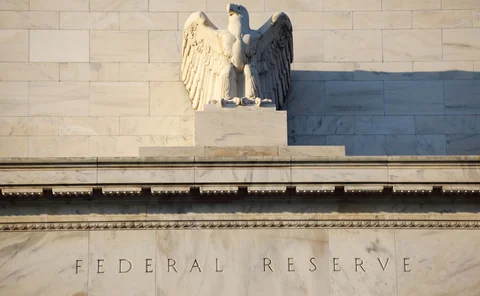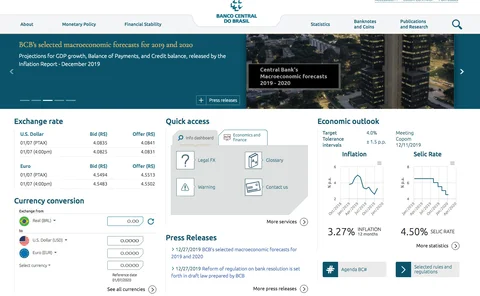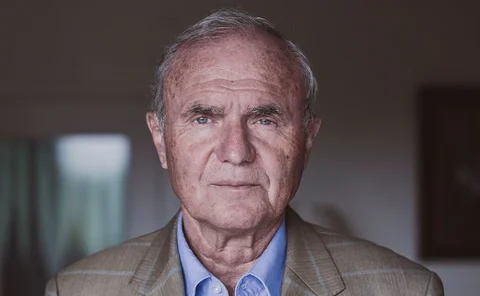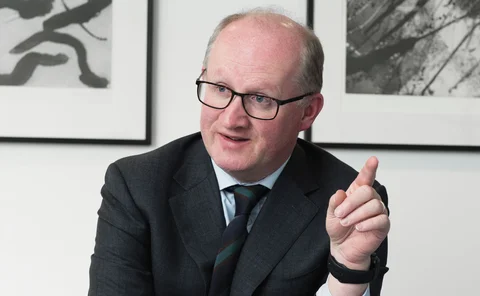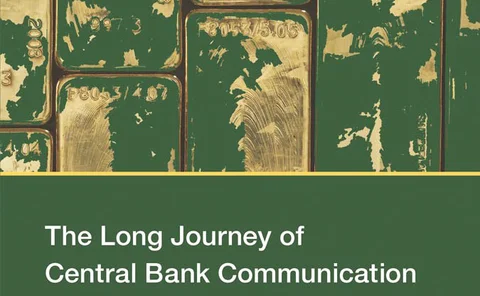Communication
FOMC members welcomed ‘outcome-based’ guidance on QE
Fed policy-makers emphasised importance of balance sheet being used flexibly, minutes show
Communications in focus: Central Bank of Brazil
The head of communications at the Central Bank of Brazil speaks about the use of websites during a pandemic and how central bank communications will need to evolve
Paper tracks changing rhetoric of Bank of Italy governors
Governors have changed the focus of their concluding remarks over time, as well as the length of their speeches
BoE considering legal action over hoax press release
Group calling themselves the ‘Yes Men’ claimed credit for the fake
Otmar Issing on the art of central bank communications
EMU architect speaks about Draghi’s “whatever it takes” intervention, forward guidance failures, the Fed’s average inflation target ‘miscommunication’, and why the ECB may be overreaching in its strategy review
Lane’s calls to investors stir controversy ahead of key ECB meeting
Chief economist’s private discussions with investors after policy meetings come under scrutiny
Phillipines central bank says new website has improved comms
BSP says website’s mobile-friendly design and chatbot has boosted effectiveness
RBNZ launches review of accidental disclosure
Information on new funding for lending programme was released before policy was officially unveiled
Transparency on financial stability not always optimal – Fed paper
Author finds upside to opacity, but says central banks may face time inconsistency problem
Fed minutes reveal debate over forward guidance
Some FOMC members warned stronger forward guidance in new framework would tie Fed’s hands
Haldane makes case against ‘economic anxiety’
Communication essential to avoid caution “morphing into fear and fatalism”, says BoE chief economist
Raising inflation expectations may depress growth – Jackson Hole paper
More nuanced communication would help public understand state of the economy, say researchers
Klaas Knot on ECB policy-making, the FSB and central bank ‘capture’
DNB president talks about the temporary nature of unconventional policies, the importance of inflation target ‘bands’, the role of central banks as ‘circuit-breakers’ and ECB decision-making under Christine Lagarde
Central bank comms need “second sea change” – Canadian governor
Pandemic has shown importance of transparency and communications, Tiff Macklem says
Better communication boosted monetary policy effectiveness in Indonesia
More concise press releases and issuing maturities beyond one month would further improve it, says IMF study
Weidmann to testify quarterly in parliament to explain ECB policy
Measure follows constitutional court ruling requiring ECB to demonstrate proportionality of government bond purchases
US citizens think Fed’s communication strategy needs adapting – Fed report
“Fed Listens” events revealed a lack of understanding about inflation targeting, report shows
Central bank museums grapple with lockdown
Money museums moved online to keep communicating during Covid-19 lockdown; some now plan to reopen for a limited number of visitors
BoE paper: narratives can help overcome ‘radical uncertainty’
Speaking directly to the public can improve analysis and communication of policy, authors find
Debts, deficits, central banks and inflation
Forrest Capie and Geoffrey Wood ask what insights history can provide for central banks and governments managing abrupt, large increases in debt
Amplifying the soundwaves: the evolution of social media communications
Central banks’ social media usage is on the rise, but their choice of platform is shifting more and more towards the visual
FOMC discusses communication ‘escape clauses’
Fed might need “leeway” to deal with financial instability, some FOMC members say
Bank of Mexico revamps policy communication
Board members allowed to express individual opinions and voting included in policy statements
Book notes: The long journey of central bank communication, by Otmar Issing
This book is a “masterly exposition on central bank communication, its evolution and continuing challenges”, writes Anand Sinha
